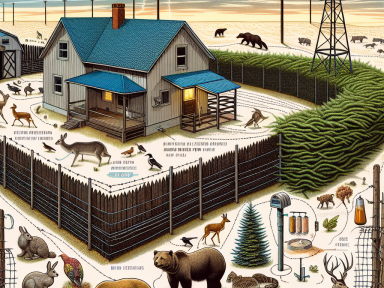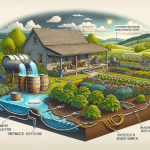Understanding Wildlife in the Homesteading Landscape
As you step into the world of self-reliance, one of the most crucial challenges you will face is understanding and efficiently managing wildlife around your homestead. Coexisting with wildlife in a sustainable and safe manner is vital for a thriving ecosystem.
Recognizing Potential Threats
Every geographical location hosts a distinct community of wildlife that might pose threats to your homestead. Recognize and understand these threats to increase your chances of successful homesteading.
Foraging Animals
- Deer: Though generally non-threatening, deer can become a massive menace to your homestead as they can destroy crops, potentially decimating your food supply.
- Racoons: These critters are notorious for their curiosity and cunning, often finding ways into homes, sheds, and food stores.
- Rabbits: Just like deer, rabbits can present a significant threat to your garden and crops. Rabbits multiply quickly, intensifying the potential for crop loss.
Predatory Animals
- Bears: Bears can pose considerable danger to people and livestock if they wander too close to your homestead.
- Mountain Lions: These large, powerful cats can threaten smaller livestock, pets, and potentially even humans.
Developing a Wildlife Management Strategy
A comprehensive wildlife management strategy will help coexist with wildlife in a manner which ensures your family’s safety, maintains your resources, and protects the native wildlife.
Establish Defensive Perimeters
Setting up fences, noise makers, and lights can act as deterrents for approaching wildlife. For more substantial threats like bears, invest in sturdy, electrified fencing around your property.
Safely Store Supplies
Protect your supplies from opportunistic wildlife by storing them securely indoors or in facilities like barns. Lock up your food sources to prevent attracting wildlife to your homestead.
Keep Livestock Protected
Implement nighttime lockdowns for livestock, use guard animals, and build predator-proof shelters to ensure the safety of your animals from wildlife predators.
Promoting Wildlife Coexistence
While you must protect your homestead, it’s essential to respect the natural wildlife and encourage a balanced ecosystem.
Create Natural Barriers
Planting thorny, dense vegetation can deter many foraging and predatory animals from entering your property.
Provide Alternative Food Sources
Offering high-up bird feeders, crops specifically for wildlife, or salt licks can help curb wildlife’s interest in your primary food stores and crops.
Remember, coexistence is about balance. As we seek the rewards of homesteading, protecting our livelihood shouldn’t have to be at the cost of the natural community around us. The success of your self-reliance journey depends on understanding, awareness, and action.




GIPHY App Key not set. Please check settings